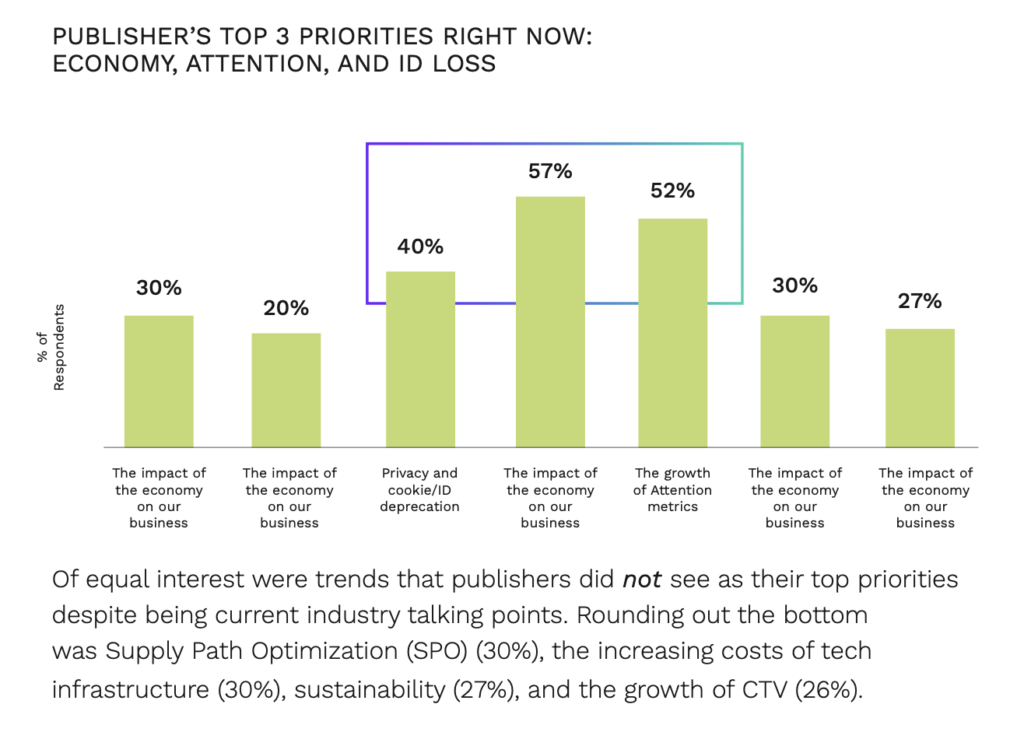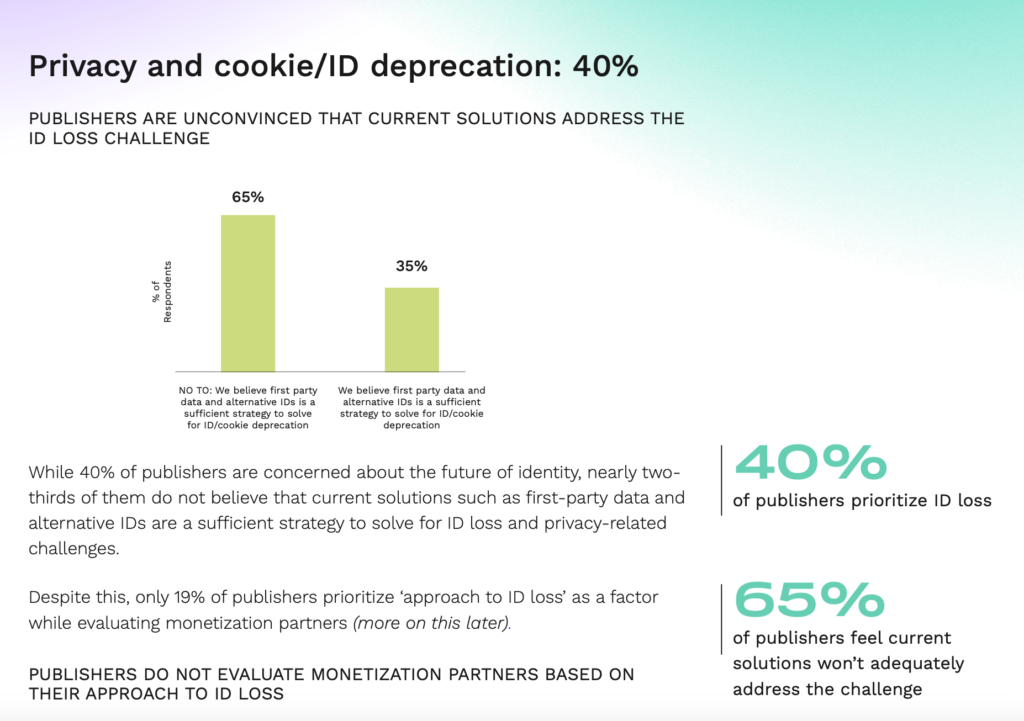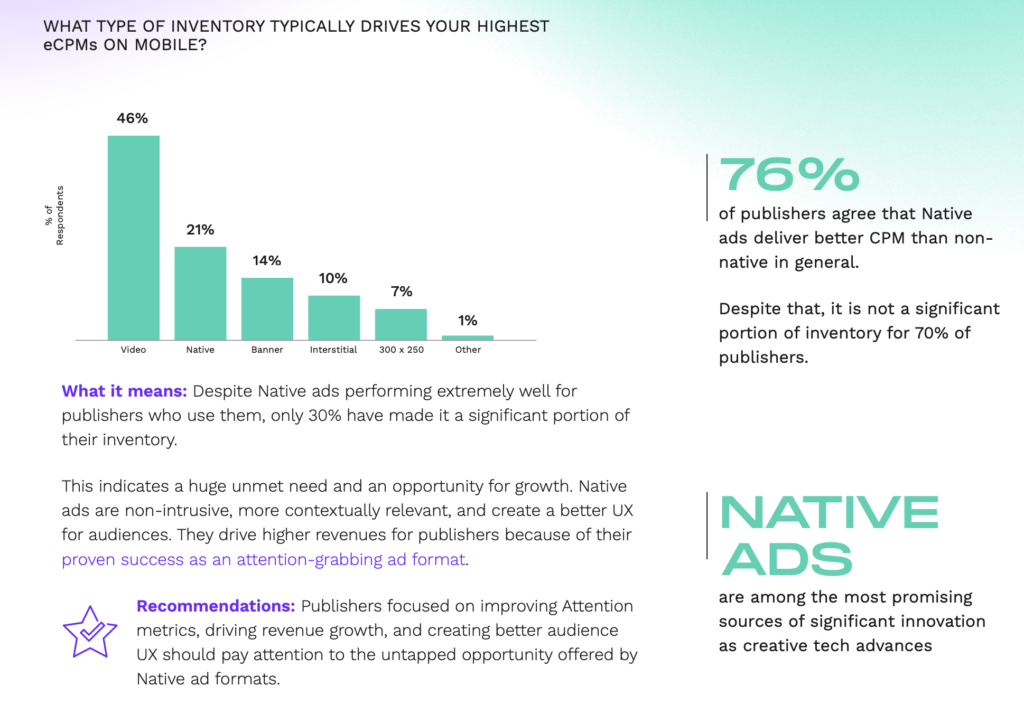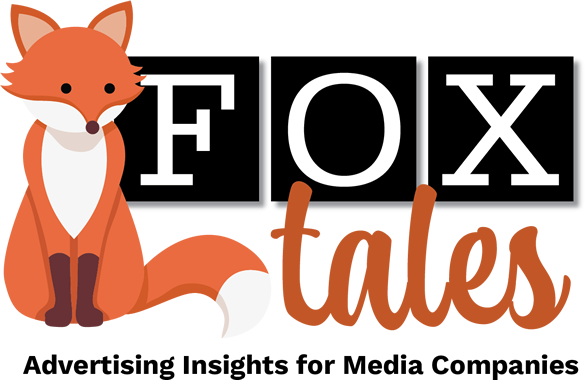It’s July, it’s mid-year, so naturally it’s an appropriate time to assess the advertising and marketing climate. And that’s exactly what the San Francisco-based advertising-services company Emodo has done with a study released earlier this month.
Called Publishers’ Priorities and Strategies in a Changing AdTech Landscape, it offers a comprehensive look at trends and expectations in the broader digital-advertising market. Among them:
- Publishers are concerned about the state of the economy.
- They’re seeking incremental sources of revenue and growth.
- There’s a growing focus that zeros in on three things: high-quality demand sources, innovations in ad creative with accompanying pricing premiums, and seeking incremental spending from new marketer budgets by differentiating advertising offerings.
Publisher respondents were asked to prioritize three of the top seven industry trends they felt were most important to their roles and their companies. The findings were clear. Two-thirds of respondents (57%) are concerned about the overall economy. That was the top priority. Third was ID loss, defined as less data about users and visitors as a result of the loss of third-party cookies. This, Emodo said, is an industrywide concern. It was mentioned by 40% of respondents.
Less expected, coming in at number two, with 52% or respondents mentioning it, is increased publisher focus on attention metrics.

A Focus On Reader Attention
Attention metrics seek to measure engagement not by visits, clicks, page views and the like, but through tracking a variety of data points, which then are fed into a machine-learning model to predict the kinds of creative and the best media environment to gain the attention of a hypothetical audience member.
Typically, a tech company will create a group of audience members who consent to engage with digital content, including a publisher’s brands and an advertiser’s creative, while eye-tracking cameras trace the path of their gaze around the screen.
The technology follows what parts of the page participants look at and for how long, including the parts of the page that contain ads. Through that, metrics like viewability, time in view, dwell time, contextual alignment, cursor hover time, scroll depth, click-through rate, and audio volume levels can then be layered on top of the eye-tracking data to make the predictive model even more intelligent.
The Emodo survey, first in a series, was recently conducted online. Respondents were 142 publisher-side professionals in the U.S. and U.K. who were vetted by the Emodo Institute for industry representation.

Meanwhile, regarding the third-most important priority, ID loss, nearly two- thirds of respondents indicated that they do not believe that current solutions, such as first-party data and alternative IDs, are a sufficient strategy to solve for ID loss and privacy-related challenges. Still, despite that, only 19% of publishers prioritize ‘approach to ID loss’ as a factor when evaluating monetization partners.
Ad Formats
Much of the report concerns fairly technical programmatic ad-tech issues, but one interesting finding is that publisher attention is increasingly focused on the format of an ad—that is, whether it’s a banner, a native unit, video, interstitial, or some other.
In addition, the respondents who consider the rise of attention metrics as a top 3 trend are 62% more likely to rate unique creative formats as a key consideration when evaluating their monetization partners.
Overall, 46% of respondents report video as their highest CPM earner, but a meaningful portion derive their highest CPMs from native and even banner ads. In fact, 76% of publishers that actively offer native inventory drive higher CPMs with native than with other formats, according to the report.
Nevertheless, even with that strong performance, only 30% of publishers report that it makes up a significant portion of their inventory. Making that even more enigmatic is that native is clearly a well-established and effective marketing vehicle for marketers.

To read the full report, click here.
